The Maserati 450S was one of the fastest and most powerful sports racers of the 1950s and an instrumental tool in the company's arsenal when it mounted an all-or-nothing assault on the FIA's endurance World Sportscar Championship for 1957. Between 1956 and 1958, nine examples were built, with development starting two years earlier in 1954 under the codename Tipo 54 led by Chief Engineer, Ing. Alberto Bellentani and Guido Taddeucci. Following the tragic crash at Le Mans in 1955, the Tipo 54 project was temporarily shelved until American racing-team owner Tony Parravano ordered a Maserati V-8 to power his Kurtis Indianapolis `500`roadster. The V-8 Indianapolis engine displaced 4.2-liters and would eventually grow to 4.5-liters for Maserati's sports-car racing program. 
Spyder
Chassis #: 4509
Engine #: 4509
View info and history
Auction entries : 1Paired with a plethora of talented drivers that included Juan Manuel Fangio, Maurice Trintignant, Stirling Moss, Carroll Shelby, and Denis Jenkinson, the 450S won the 12 Hours of Sebring and the Swedish Sports Car Grand Prix, finishing the 1957 season as runners-up to Ferrari. Maserati's success in the postwar era was made possible by its prewar history that dates back to the turn of the century when a Bolognese teenager named Carlo Maserati took part in racing competitions on a home-built motorcycle. Carlo's five younger brothers, including Alfieri, shared his motoring enthusiasm and followed him into family automobile pursuits. History and Legacy
For decades, the Maserati company was solely focused on the racing car industry, and its exclusive products catered to wealthy enthusiasts. Of the six surviving Maserati brothers, all except Mario would go on to become motor engineers. Even Mario would have a significant role in the marque's foundation, designing its famous Trident badge, which is said to have been inspired by the statue of Neptune in Bologna, where the factory was situated at Pontevecchio. At its inception, Società Anonima Officine Maserati - established in December 1914 by Alfieri Maserati - specialized in the tuning and repairing of Isotta-Fraschini motor cars. When The Great War ended, Alfieri and his brother Ettore were recruited to manage Diatto's racing programme, and when that Italian company withdrew from active competition the pair, together with Ernesto Maserati, set up on their own.
Spyder
Chassis #: 4508
Engine #: 4511
View info and historyOne of the earliest Maserati products was a 1.5-liter supercharged straight-eight intended for the formula that commenced in 1926. Known as the Tipo 26, the new vehicle was crewed by Alfieri Maserati and mechanic Guerino Bertocchi, and would win its class in that year's Targa Florio. Approximately a dozen Maserati 26M and 26M Sport competition cars were built at the Maserati brothers' Bologna factory from 1930 to 1932. When Alfa Romeo introduced its 8C 2300 Monza and Bugatti its TYpe 51, Alfieri Maserati responded by increasing the cylinder bore of his 26M engine from 65mm to 69mm - the maximum possible permitted by his '2500' block casting – which with the 69mm stroke length produced a displacement of 2811cc. Bologna-based carburetor manufacturer Edoardo Weber collaborated with Maserati in perfecting the new engine's induction system, helping to extract over 200 horsepower from the 8C-2800 model. The Maserati 8C-2800 made its debut in the 1931 French Grand Prix at Montlhèry, just south of Paris, where Luigi Fagioli broke the lap record, followed by a victory that September in the Monza Grand Prix. In 1932, Maserati introduced the 4CM, a single-seater powered by either a 1,100 or 1,500 cc supercharged four-cylinder engine. The voiturette races for 1,500 cc cars, which took place between 1931 and 1940, were very popular and essentially a scaled-down version of the Grand Prix car. Maserati's racer would become one of the principal competitors in voiturette racing throughout the mid-1930s. When ERA raised the competition bar even further, Maserati responded with the 6CM equipped with a supercharged twin-cam inline-six-cylinder engine. The model broke new ground in voiturette design with its independent torsion bar front suspension, which greatly improved road-holding and cornering speed. Additional improvements introduced in 1938 included a more potent engine, semi-cantilever rear springs, a lowered frame, and a more aerodynamic body.Alfieri Maserati passed away in 1932, leaving the operation of the company to three other brothers, Ernesto, Bindo, and Ettore. In 1937, the brothers sold their shares in the company to the Adolfo Orsi family, who, in 1940, relocated the company headquarters to Modena. Having signed a 10-year contract, the brothers continued in engineering roles with the company and were instrumental in achieving back-to-back victories in 1939 and 1940 with the 8CTF at the Indianapolis 500. 
Spyder
Chassis #: 4508
Engine #: 4511
View info and historyWhen the brother's contract expired, they left the Maserati company to form O.S.C.A. (Officine Specializzate Costruzione Automobili) which specialized in the manufacturing of sports and racing cars. The Post War Era
The introduction of the all-new Tipo A6 (named for company founder Alfieri Maserati and the car's six-cylinder engine) at the 1947 Geneva Auto Show signaled a new era for Maserati, as it was the company's first true production car. Production remained exclusive with approximately 61 examples of the original A6/1500 constructed, and all but two wore aluminum coachwork by Pinin Farina. Although intended for the road, the A6 showcased its thoroughbred pedigree in May of 1949 when it achieved a First in Class finish at the Coppa Inter-Europa, an annual race for sports and GT cars held at Monza. The Tipo A6 laid the foundation and pattern for Maserati road cars of later years. It had a ladder frame chassis with double-wishbone front suspension, derived from racing practice, and complimented the coil-sprung live rear axle. Beneath the bonnet was a single-overhead-camshaft six-cylinder engine in aluminum and magnesium, displacing 1,488cc, and similarly constructed to the A6GCS sports car's 2.0-liter unit. Formula One
Maserati built twenty-six examples of its 250F racing car for use in '2.5 Litre' Formula One competition, and it enjoyed an unusually long lifespan that stretched seven years and was crucially important in carrying Juan Manuel Fangio to two of his five World Championship-winning seasons, in 1954 and 1957. With Fangio at the helm, Maserati won the first two championship races of the new 2.5-litre formula in 1954. The list of renowned drivers included Alberto Ascari, Peter Collins, Mike Hawthorn and Stirling Moss, and customers who acquired the 250F in period included Prince Bira, Harry Schell, Roy Salvadori, Toulo de Graffenried and others who would achieve victory on both national and international levels. Quite simply, the 250F is considered one of the greatest and most beautiful single-seater Grand Prix racing cars to have ever been built. It was endowed with a potent six-cylinder engine and blessed with responsive handling and an aerodynamic shape.
Spyder
Chassis #: 4504
View info and historyThe 250F competed in 46 Formula One championship races with a total of 277 entries and eight victories, along with numerous non-championship races around the world. Sports Car Racing
The Zenith of Maserati's competition achievement is (arguably) the era between 1954 and 1957, highlighted by the 250F in Grand Prix competition and the successful sports car program.The competition-oriented A6GCS (CS for Corsa Sport) created a sensation for Maserati from its launch, and its design and development were overseen by Gioachino Columbo who joined the firm in 1952. Primarily intended to be a sports racer, it was powered by a potent 1995cc twin-cam six-cylinder engine, tubular chassis, independent front suspension, and rigid rear axle. Most examples wore Barchetta coachwork by Fantuzzi, while others were clothed by Frua, Pinin Farina, and Vignale. Numerous victories were achieved with the A6GCS including at the Targa Florio and Pescara.
Spyder
Chassis #: 4504
View info and historyThe A6GCS was followed by the 150S (Tipo 53) built from 1955 through 1957 and was built alongside the Maserati 200S. It was equipped with a 1,484.1cc engine installed in a 100-inch wheelbase chassis. Production of the 200S lasted from 1955 through 1959 (Tipo 52) and was powered by a 1,994.3cc inline-four light-alloy engine with dual overhead valves per cylinder and DOHC camshafts. Many chassis components from the 150S were used to help speed up development. The Maserati 300S had a 3.0-liter displacement size with its straight-6 engine design based on the Maserati 250F. Many of the mechanical components were sourced from the 250F including the brakes and suspension.Between 1955 to 1958, Maserati built and sold approximately 92 examples of the 150 S, 200 S, 300 S, 350 S and the 4.5 liter 450 S two-seater racing cars. For one Mille Miglia, a total of 31 sports racing cars were prepared by Maserati. The 300 S carried Stirling Moss to victory at World Championship races in Buenos Aires and at the Nürburgring, and it nearly won the 1956 Sports Car Championship. Bill Lloyd won the SCCA 'D'-modified Championship in 1956 and that same year, the 300 S sports cars driven by Fangio, Moss, Behra and Musy recorded 11 victories in major events and Taruffi finished an impressive second overall in the Targa Florio.The ultimate evolution of Maserati's Sports Racing program was the 450 S (Tipo 54).The Maserati 450S
Maserati's audacious campaign to take World Championships in both Formula 1 and sports cars by 1957 was a monumental undertaking, especially for the boutique marque which lacked the resources and size of most other manufacturers. It did, however, have a rich tradition of innovation, a profound understanding of mechanical sophistication, and some of the most talented engineers and drivers of the era.
Spyder
Chassis #: 4504
View info and historyStirling Moss nicknamed the 450S the 'Bazooka' and others dubbed it the 'Il Mostro,' The Monster, for its brutality and power. It represented the pinnacle of late-1950s international sports car racing and during the 1957 season, it either crashed, suffered mechanical problems, or won the race.A 350S with chassis number 3501 was modified to accommodate the Tipo 54 engine, a 4,47cc, 90-degree V8 with four 45 IDM Weber twin-choke carburetors mounted between the Vee. It had double overhead camshafts, bore size of 93.8mm, and a stroke of 81mm. Its short-stroke architecture provided high-rpm operation and scale for further development and its two valves per cylinder were actuated by four gear-driven overhead camshafts, two per cylinder bank. The 4.5-liter Maserati V8 engine weighed 425 pounds fully assembled and developed an astonishing 400 horsepower at 7,200 engine revolutions. Chassis number 3501 had begun its existence in 1955 using the chassis of a 300S and equipped with a 3.5-liter straight-6 engine under development for the future 3500 GT. Stirling Moss crashed #3501 in 1956 at the Mille Miglia and when it returned to the factory, it was rebuilt as the prototype 450S. The second 350S chassis, chassis number 3502, was also later upgraded to 450S specifications in 1956. 
Spyder
Chassis #: 4509
Engine #: 4509
View info and history
Auction entries : 1Following test runs at Monza, chassis number 3501 was entered in the 1,000-km Swedish Grand Prix for sports cars at the Rabelovsbana circuit. Although fast on the straights, it was unable to best the times of the standard 350S due to inadequacies in non-enigne-related components. To take full advantage of the potent engine, a stiffer new tubular-frame chassis was designed by Maserati's chassis and transmission engineer, Ing. Valerio Colotti. The front suspension continued to use Maserati's preferred setup of double wishbones and coil springs. In the back, however, was a heavily-reinforced tubular de Dion setup with a new five-speed gearbox and limited-slip ZF differential positioned ahead of the de Dion tube. Transverse leaf springs were added to the rear suspension and the brakes were enlarged and cooling improved. The first Tipo 54 chassis created was #4501 and initially housed a 4.2-liter V8. It made its racing debut at the Swedish Grand Prix in 1956 where several mechanical issues hindered the car's performance. The wrong firing order of the engine resulted in unbearable vibration, and once again further chassis work was needed to cope with the engine's output. The car qualified third in the practice round but did not compete in the race. Chassis 4501 was later driven by Stirling Moss and Juan Manuel Fangio in the 1957 Buenos Aires 1,000 km where a clutch failure sidelined the car prematurely. The 450S had led much of the race before the clutch problems caused them to slow, and the transmission failure forced their retirement. Chassis number 4501 was re-bodied as a coupe by Zagato to a design created by Frank Costin of England. It was raced by Moss at LeMans but failed to finish. It was later restored by Medardo Fantuzzi of Maserati, given a new chassis number of 4512. Following a subsequent restoration by Faralli & Mazzanti, it was converted into a road car. 
Spyder
Chassis #: 4509
Engine #: 4509
View info and history
Auction entries : 1The re-numbered 350S-derived development 'mule', along with chassis number4503 and 4505, werethe first 'Works' 450S racing cars.Between 1956 and 1958, Maserati constructed a total of 9 examples of the 450 S. Chassis 4502 was equipped with the 4.5-liter and sold to Tony Parravano in October 1956 along with Indianapolis engines numbered 4201 and 4202. Parravano was among the company's best customers, owning around 17 competition cars at a single time. He fled to Mexico in 1957 when the FBI indicted him on income-tax evasion.Chassis number 4503 was driven to victory at the 12 Hours of Sebring by Fangio and Jean Behra who took the lead on lap 20 and never relinquished it. They finished the race with a commanding two lap lead over the next car, a Maserati 300S. This was the most dominating victory in Sebring's short history and Fangio became the first driver to win Sebring back-to-back. 
Spyder
Chassis #: 4509
Engine #: 4509
View info and history
Auction entries : 1 During practice for the Mille Miglia, Behra crashed and was unable to start the race. After being rebuilt, the car raced at the Swedish Grand Prix 1000 Km in August 1957, driven by Stirling Moss and Harry Schell. In the last event of the season, the Caracas race in November of 1957, this car was again driven by Moss. While in the lead, he collided with an AC Bristol, demolishing both cars. The car was brought back to Modena, rebuilt, and sold to a South American in 1958.Swapping chassis numbers was a familiar practice among manufacturers of the era as a way to avoid import duties between races. Damaged or unavailable cars often had their chassis numbers exchanged with race-ready cars. Thus, it is believed that chassis number 4504 was entered in the Nurburgring event as chassis number 4503, as the damaged 4503 had not yet been repaired. Chassis 4505 may have run as number 4503 at LeMans. Chassis number 4506 was purchased by John Edgar, who later owned 4505. Chassis number 4507 raced at the Venezuelan Sports Car Grand Prix where it was destroyed in a crash that also involved 4503. Chassis #4509 and #4510 are believed to have been sold to the US and raced in SCCA competition. 
Spyder
Chassis #: 4509
Engine #: 4509
View info and history
Auction entries : 1Maserati's victory at Sebring and Kristianstad, along with a second-place at Buenos Aires and fourth in the Mille Miglia by a 300S earned the company enough points to finish the 1957 season in second place in the World Sports Car Championship. The 450S became obsolete at the end of the season due to new 3-liter regulations for the World Sportscar Championship. They would continue to race in various other events including in the SCCA Sports car series.
by Daniel Vaughan | Jun 2022

Spyder
Chassis #: 4509
Engine #: 4509
View info and history
Auction entries : 1
For decades, the Maserati company was solely focused on the racing car industry, and its exclusive products catered to wealthy enthusiasts. Of the six surviving Maserati brothers, all except Mario would go on to become motor engineers. Even Mario would have a significant role in the marque's foundation, designing its famous Trident badge, which is said to have been inspired by the statue of Neptune in Bologna, where the factory was situated at Pontevecchio. At its inception, Società Anonima Officine Maserati - established in December 1914 by Alfieri Maserati - specialized in the tuning and repairing of Isotta-Fraschini motor cars. When The Great War ended, Alfieri and his brother Ettore were recruited to manage Diatto's racing programme, and when that Italian company withdrew from active competition the pair, together with Ernesto Maserati, set up on their own.
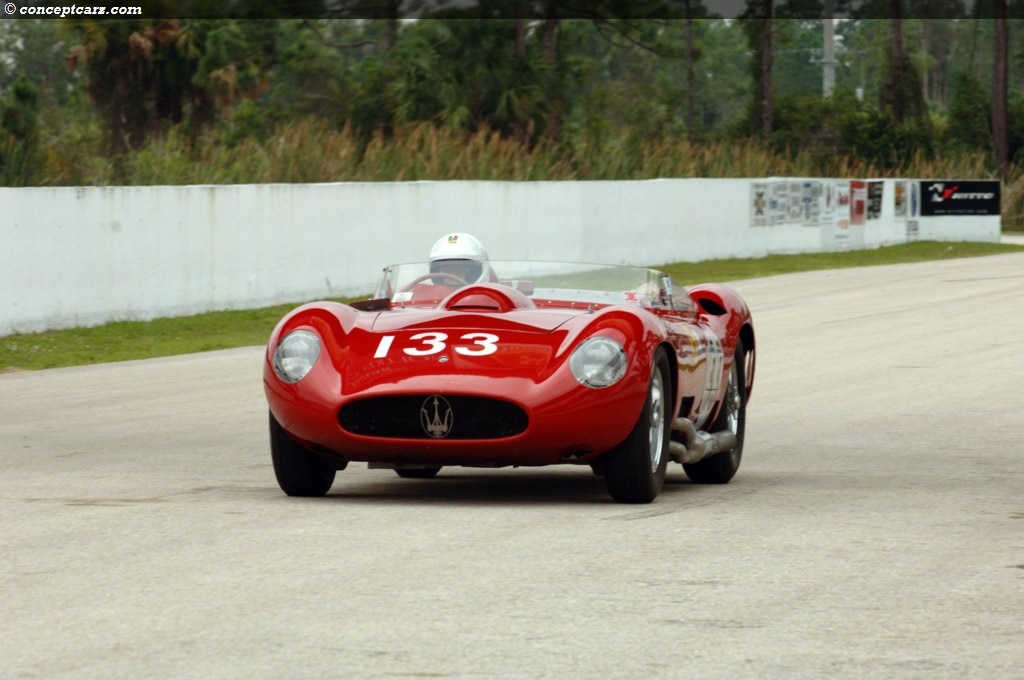
Spyder
Chassis #: 4508
Engine #: 4511
View info and history

Spyder
Chassis #: 4508
Engine #: 4511
View info and history
The introduction of the all-new Tipo A6 (named for company founder Alfieri Maserati and the car's six-cylinder engine) at the 1947 Geneva Auto Show signaled a new era for Maserati, as it was the company's first true production car. Production remained exclusive with approximately 61 examples of the original A6/1500 constructed, and all but two wore aluminum coachwork by Pinin Farina. Although intended for the road, the A6 showcased its thoroughbred pedigree in May of 1949 when it achieved a First in Class finish at the Coppa Inter-Europa, an annual race for sports and GT cars held at Monza. The Tipo A6 laid the foundation and pattern for Maserati road cars of later years. It had a ladder frame chassis with double-wishbone front suspension, derived from racing practice, and complimented the coil-sprung live rear axle. Beneath the bonnet was a single-overhead-camshaft six-cylinder engine in aluminum and magnesium, displacing 1,488cc, and similarly constructed to the A6GCS sports car's 2.0-liter unit. Formula One
Maserati built twenty-six examples of its 250F racing car for use in '2.5 Litre' Formula One competition, and it enjoyed an unusually long lifespan that stretched seven years and was crucially important in carrying Juan Manuel Fangio to two of his five World Championship-winning seasons, in 1954 and 1957. With Fangio at the helm, Maserati won the first two championship races of the new 2.5-litre formula in 1954. The list of renowned drivers included Alberto Ascari, Peter Collins, Mike Hawthorn and Stirling Moss, and customers who acquired the 250F in period included Prince Bira, Harry Schell, Roy Salvadori, Toulo de Graffenried and others who would achieve victory on both national and international levels. Quite simply, the 250F is considered one of the greatest and most beautiful single-seater Grand Prix racing cars to have ever been built. It was endowed with a potent six-cylinder engine and blessed with responsive handling and an aerodynamic shape.
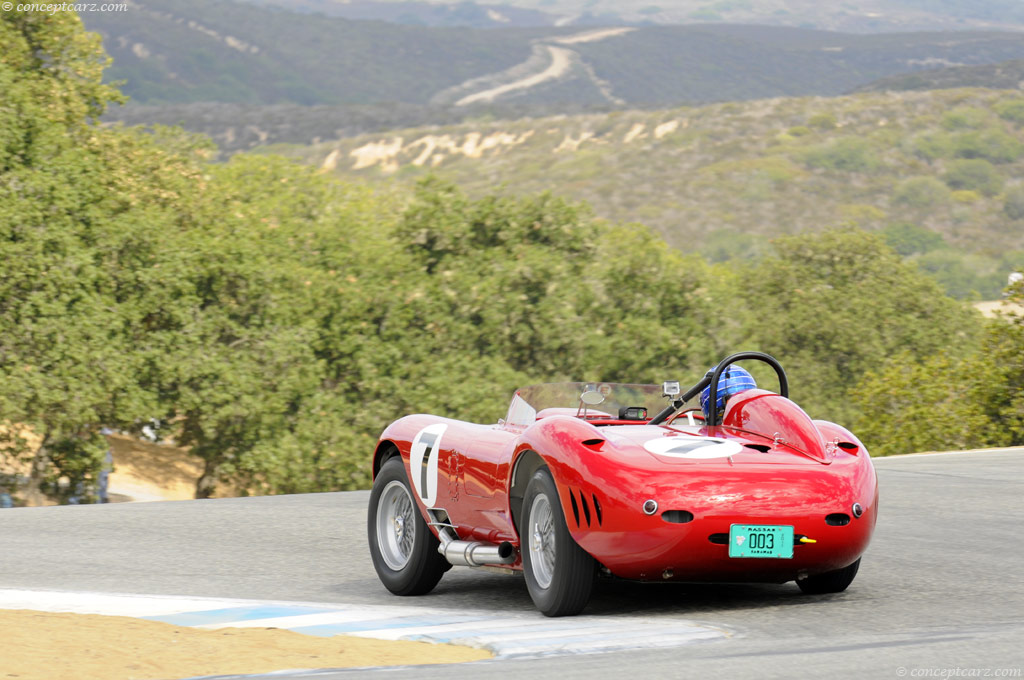
Spyder
Chassis #: 4504
View info and history
The Zenith of Maserati's competition achievement is (arguably) the era between 1954 and 1957, highlighted by the 250F in Grand Prix competition and the successful sports car program.The competition-oriented A6GCS (CS for Corsa Sport) created a sensation for Maserati from its launch, and its design and development were overseen by Gioachino Columbo who joined the firm in 1952. Primarily intended to be a sports racer, it was powered by a potent 1995cc twin-cam six-cylinder engine, tubular chassis, independent front suspension, and rigid rear axle. Most examples wore Barchetta coachwork by Fantuzzi, while others were clothed by Frua, Pinin Farina, and Vignale. Numerous victories were achieved with the A6GCS including at the Targa Florio and Pescara.
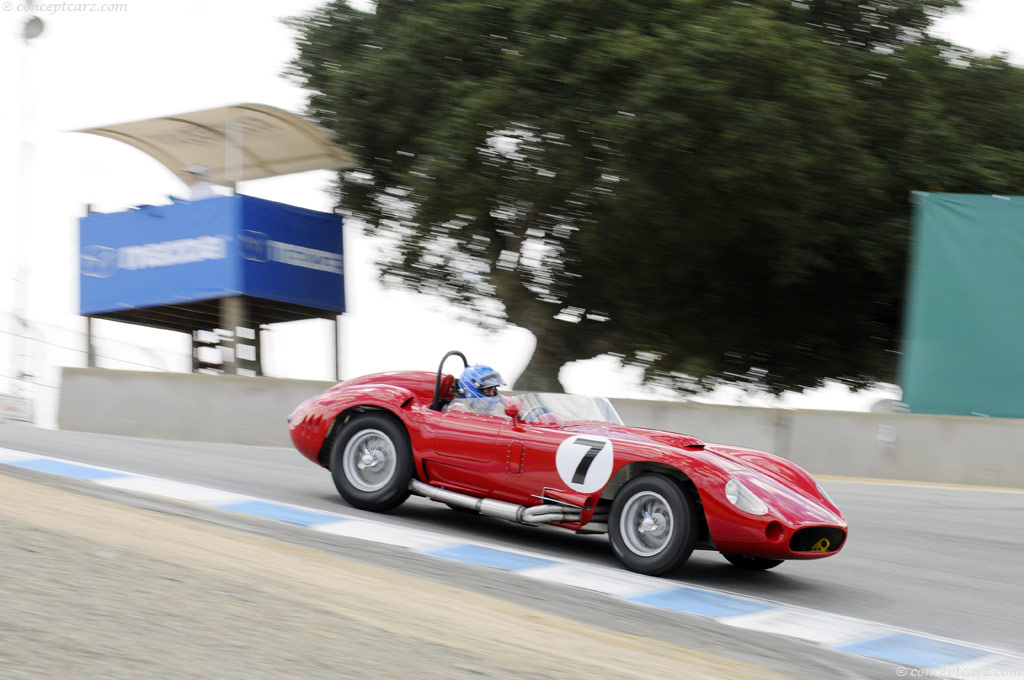
Spyder
Chassis #: 4504
View info and history
Maserati's audacious campaign to take World Championships in both Formula 1 and sports cars by 1957 was a monumental undertaking, especially for the boutique marque which lacked the resources and size of most other manufacturers. It did, however, have a rich tradition of innovation, a profound understanding of mechanical sophistication, and some of the most talented engineers and drivers of the era.

Spyder
Chassis #: 4504
View info and history

Spyder
Chassis #: 4509
Engine #: 4509
View info and history
Auction entries : 1
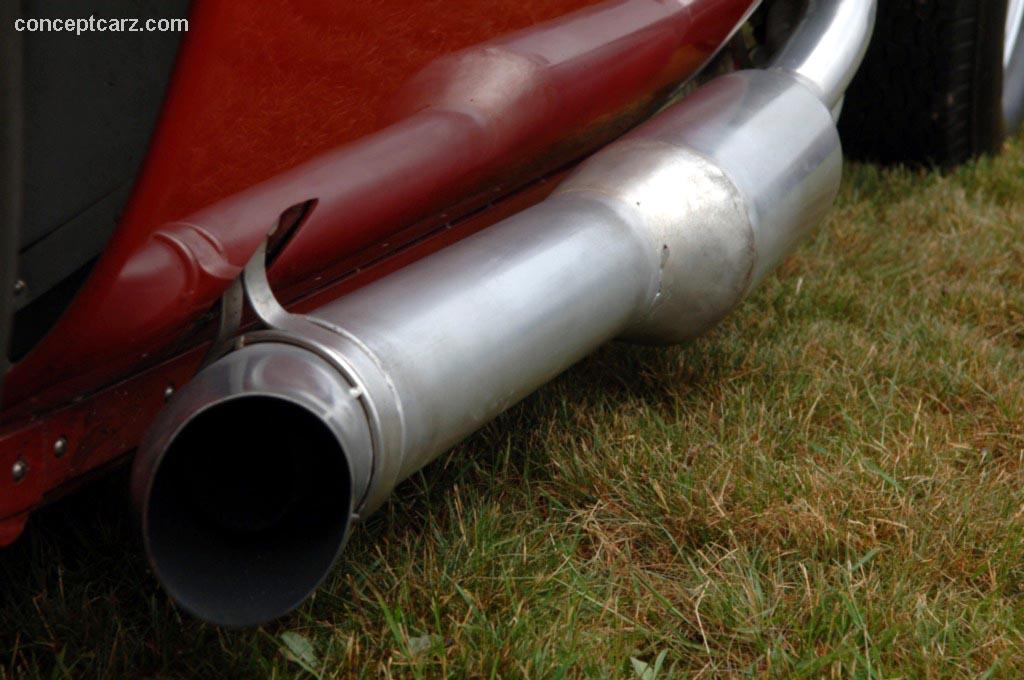
Spyder
Chassis #: 4509
Engine #: 4509
View info and history
Auction entries : 1

Spyder
Chassis #: 4509
Engine #: 4509
View info and history
Auction entries : 1
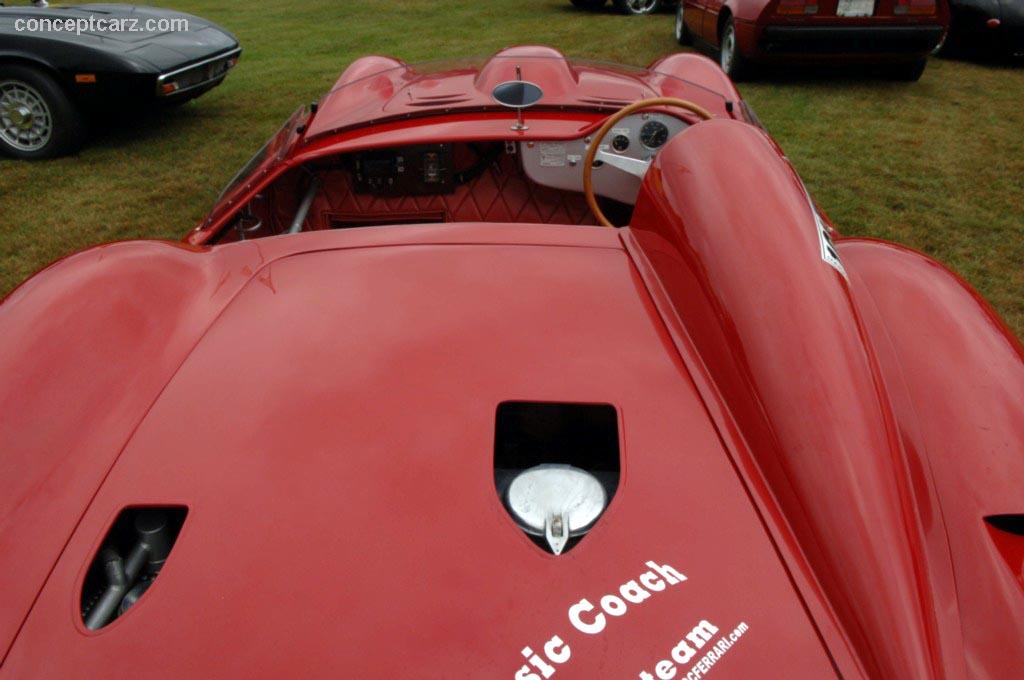
Spyder
Chassis #: 4509
Engine #: 4509
View info and history
Auction entries : 1
by Daniel Vaughan | Jun 2022
Related Reading : Maserati 450 S History
The Maserati 450 S was produced from 1956 through 1958 with only ten examples being produced. The purpose of the 450 S was to challenge the powerful competition such as Ferrari and Jaguar for the World Championship. The 450 S went beyond just a power engine it featured a chassis that was lightweight, sturdy, and durable. Two engines were constructed, a 3.5 liter six-cylinder engine and a 4.5 liter....
Continue Reading >>
Continue Reading >>
Similar Vehicles
Similar Automakers
1957 Maserati 450 S Vehicle Profiles
Recent Vehicle Additions
Related Automotive News
R.H.H. Parnell: 1959 Formula One Season
In 1951, Reg Parnell pulled off a huge upset surviving an absolute deluge of rain that flooded the Silverstone circuit during the BRDC International Trophy race. Parnell would manage to keep his Ferrari 375 under control long enough to be declared the...
Luigi Musso: Talented, Tempting and Troubled
Following Alberto Ascaris back-to-back titles in 1952 and 1953 there have been no Italian Formula One World Champions. While there has been a great amount of hope throughout the years, Italians have been left without a World Champion. Perhaps, it could...
1956 Sebring 12 Hours: Musso Impresses on American Soil
Having more than proven himself within the 2.0-liter category with the factory Maserati team, Luigi Musso makes the short trip west from Modena to Maranello to drive for Ferrari. This would be a big step up in performance, for car and driver. Here Mussos...
1958 12 Hours of Sebring: Collins and Hill Escort a Red-Head Home to Victory
In a matter of months Peter Collins would lay dying of wounds received in a violent crash at the Nurburgring during the German Grand Prix. While many would be holding their breaths and facing the cold-hard truth of another motor racing death, there would...

1957 Italian Grand Prix: A True Nobleman Stands Amongst Two of F1's Most Noble
The sea of spectators overwhelming the circuit would be a truly awe-inspiring sight to behold. The vast majority of this horde was there to celebrate the car adorned in red finishing in the top three. The cars driver, a true royal, would stand amongst...





































